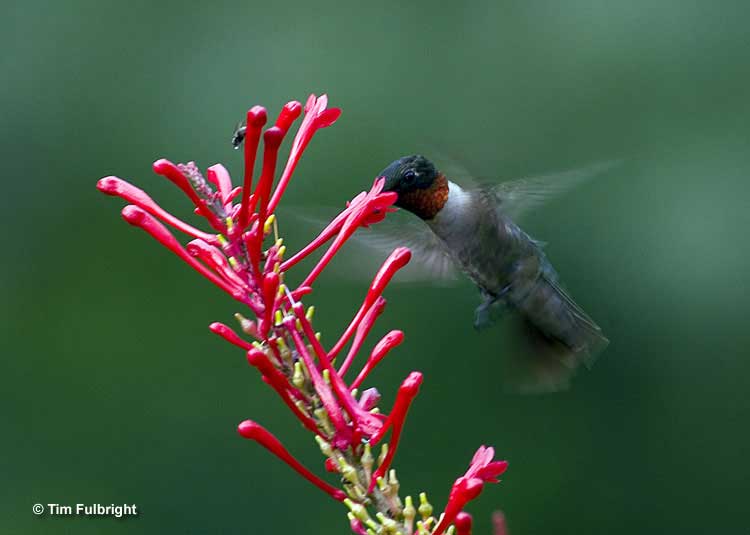
VERY SMALL | Small | Medium | Biggest
Species That Are Less Than 5 Inches in Length
Attention all fellow bird lovers!
Are you ready to dive into the fascinating world of feathered friends that are so small, they could fit in the palm of your hand?
The world of birds is diverse and fascinating, with species ranging from massive condors to tiny, feathery marvels. Among these tiny birds, some truly remarkable specimens stand out for their tiny size and appearance.
Many of the smallest birds belong to the hummingbird family and are known for their iridescent colors and fast-flapping wings. In fact, the smallest bird in the world, the Bee Hummingbird, is not much larger than a bee and is known for its shimmering blue-green and red plumage. These tiny birds lay their coffee-bean-sized eggs in a nest the size of a quarter!
We’ve gathered here the 11 smallest birds in the world and provided a short description of how to identify them and where to find them.
On this page
#1 Bee hummingbird
Mellisuga helenae
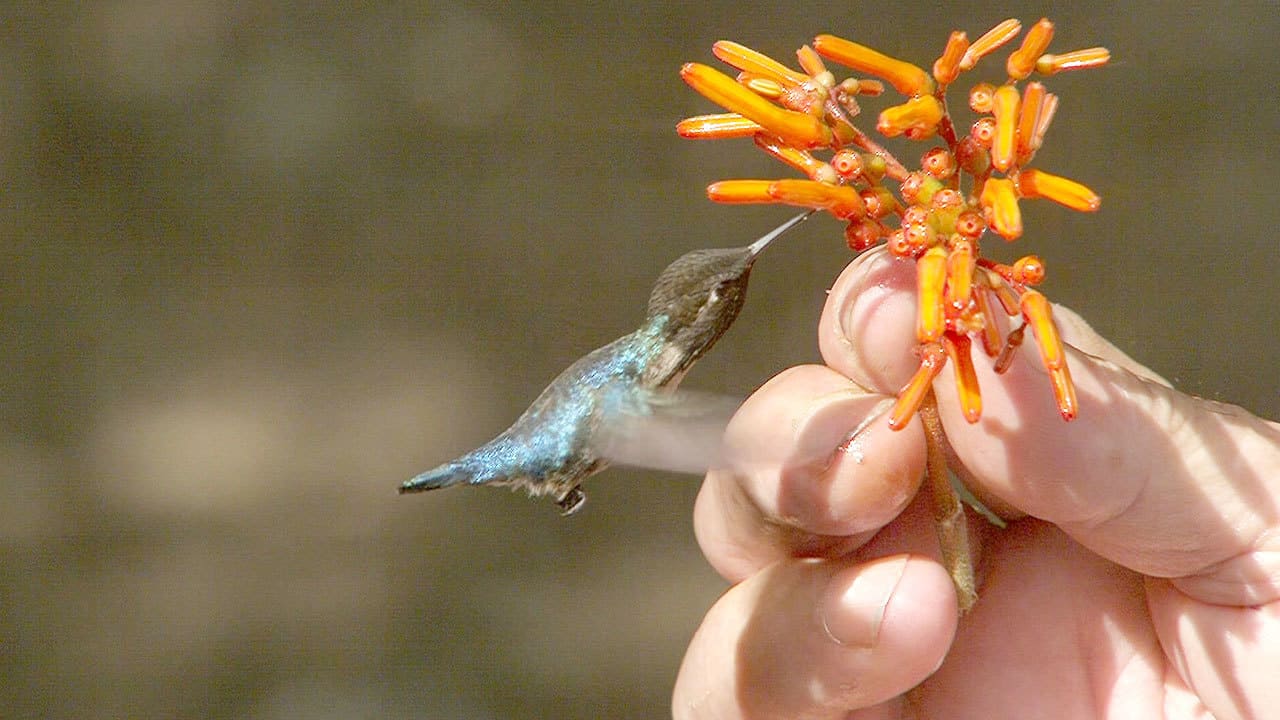
Photograph ©www3.nhk.or.jp
- Average size: 2.3 inches (5.8 cm)
- Average weight: 0.08 ounces (2.3 grams)
The Bee Hummingbird is the smallest bird species in the world, resembling a large bee in size.
Male Bee Hummingbirds have iridescent blue upperparts, a red head and throat, dark wings, and a grayish-white underside. Females have bluish-green upperparts, a pale gray underside, and white spots on their tail feathers. Iridescence is not always visible, depending on lighting and angle.
Found in coastal and interior forests, mountain valleys, gardens, and swampy areas of Cuba, they prefer to live near their favorite plant, Solandra Grandiflora.
The Bee Hummingbird is listed as near threatened due to declining numbers caused by deforestation and agricultural activities leading to the loss of suitable nesting sites.
#2 Esmeraldas Woodstar
Chaetocercus berlepschi
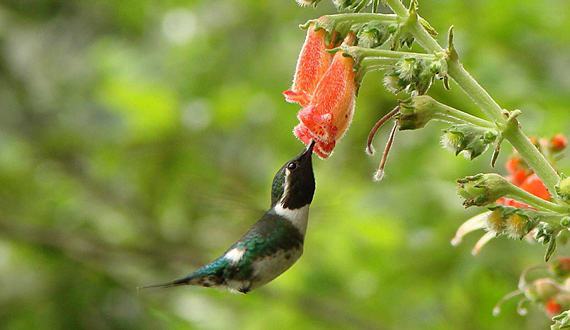
Photograph © biologicaldiversity.org
- Average size: 2.5 inches (6.4 cm)
- Average weight: less than 0.04 ounces (less than a gram)
Esmeraldas Woodstar is one of the smallest and rarest hummingbirds, only slightly larger than the Bee Hummingbird.
Males have green upperparts with a blue sheen. They have a white underside and a green band across their chest, a white stripe from their eye to the neck, a forked tail, and a bright purple throat. Females have similar plumage, although they lack the purple throat and have more of a blackish back and head instead of green.
Esmeraldas Woodstars can only be seen in the semi-evergreen to evergreen forests of western Ecuador. Their already small population of 1000-2700 individuals is decreasing due to deforestation and the IUCN Red List classifies the species as vulnerable.
#3 Costa’s hummingbird
Calypte costae

- Average size: 3.25 inches (8.25 cm)
- Average weight: 0.1 ounces (2.8 grams)
Costa’s Hummingbirds are one of the smallest hummingbirds with a distinctive hunch-backed posture and a short tail. The males have a mostly iridescent green back and flanks, a small black tail and wings, a white underside, and an iridescent purple cap and throat with throat feathers flaring out like a mustache. Females lack the purple cap and throat feathers, and their plumage is much duller overall. They have a grayish-green upperside and white underside.
The species breeds in the desert areas of the southwest United States and northwest Mexico and migrates to western Mexico for winter. It’s common within its range and its population is increasing.
#4 Weebill
Smicrornis brevirostris
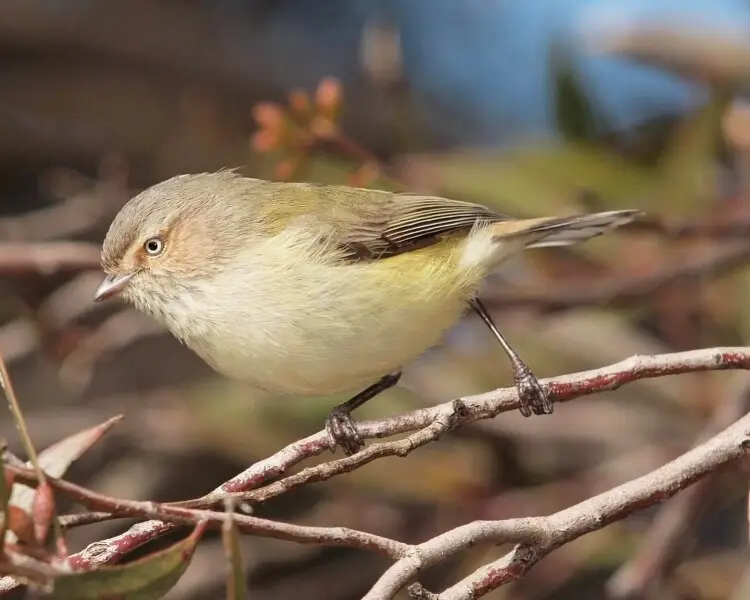
- Average size: 3.3 inches (8.4 cm)
- Average weight: 0.2 ounces (5.6 grams)
The Weebill’s plumage is unremarkable in color, ranging from a yellowish-gray on the underside to olive-brownish-gray on the back. They have a faint cream-colored stripe above their light yellow eyes. The flight feathers on their wings are pale brown and the tail feathers are brown with a black bar and white tip on all except the central pairs.
The Weebill is native to mainland Australia and primarily inhabits the canopies of dry, open eucalyptus forests, mallee, and woodlands, where it feeds on small insects and their larvae. It is a widespread species that forages in flocks and can be found almost everywhere in Australia.
#5 Calliope Hummingbird
Selasphorus calliope
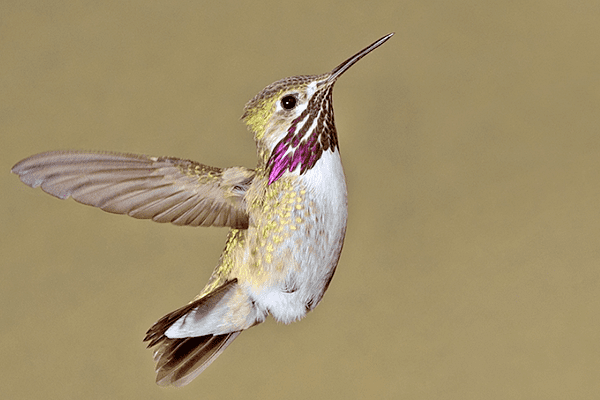
Photograph © Alan Wilson.
- Average size: 3.3 inches (and 8.4 cm)
- Average weight: 0.1 ounces (2.8 grams)
Calliope Hummingbird is the smallest bird in the United States and is quite stunning with its shiny green upperside, white underside, and magenta throat. Females are a bit more modest and have a white throat and a light peachy wash on their flanks.
Calliope Hummingbird ranges from southern Canada to Mexico in western North America with their habitat depending on the season. They breed in open shrublands, forests, meadows, and thickets at high altitudes in the Rockies, and can be found in lowland brushy areas, deserts, and semi-arid areas during migration and winter.
It’s a common bird and its population appears to be stable and in slight increase according to the IUCN Red List.
#6 Goldcrest
Regulus regulus
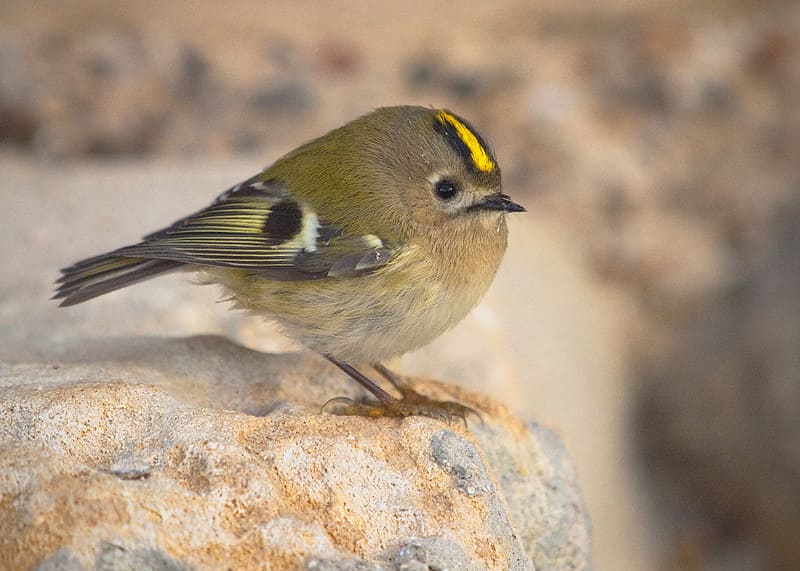
Photograph © Kentish Plumber (Flickr)
- Average size: 3.5 inches (8.9 cm)
- Average weight: 0.2 ounces (5.6 grams)
Goldcrest is the smallest bird in Europe but covers a huge range of 5.1 million square miles in Eurasia. It has grayish-green upperparts, whitish underparts, two white wingbars, a grayish head, and a bright crest. Males have an orange or yellow crest whereas females have a yellow one.
During breeding time, you can meet them in mature lowland and mountain coniferous forests. After the breeding season, it moves to more open areas.
It is very common within its range with a population of 80-200 million individuals.
#7 Spotted Pardalote
Pardalotus punctatus
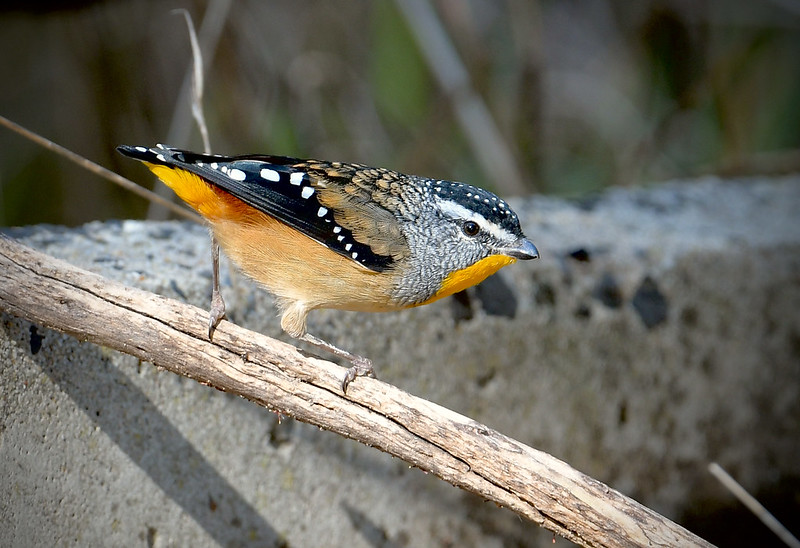
Photograph © Birdsaspoetry.com
- Average size: 3.5 inches (8.9 cm)
- Average weight: 0.21 ounces (5.9 grams)
The spotted Pardalote is a tiny bird native to eastern and southern coastal Australia. The male has a grayish-brown back with pale spots, a black head, wings, and tail with white spots, pale eyebrows, and a rust-colored stripe on its tail. Its underside is pale creamy, and it has a yellow throat. The female mostly looks the same but it’s duller.
As they’re a common bird within their range, you can easily find them in forests and woodlands but also in parks and gardens that have eucalypts. They mostly forage around in the canopy, so you can detect them by their distinct call that has four loud notes, two low and two higher.
#8 Brown Gerygone
Gerygone mouki
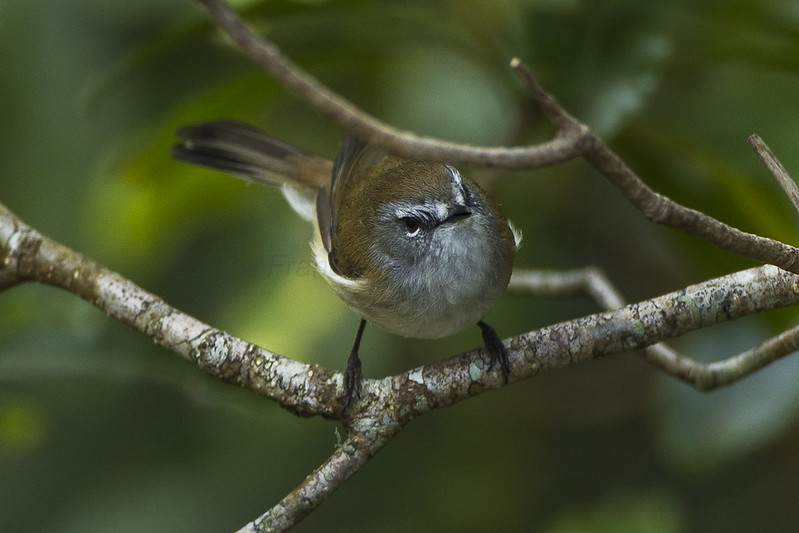
Photograph © Francesco Veronesi
- Average size: 3.9 inches (9.9 cm)
- Average weight: 0.19 ounces (5.4 grams)
Another small bird native to eastern coastal Australia, the Brown Gerygone has an unremarkable appearance meant to blend into its surroundings. Its upperside is a deep olive-gray or olive-brown, its tail feathers dark and possibly tipped in white, and its face and underparts are pale gray, creamy, or washed-out brown.
You can meet this bird in cool subtropical rainforests and its edges alone or in small groups of up to four. This energetic bird usually forages in tree foliage and calls with a soft call of three to four syllables that sound like “what is it”.
Although IUCN Red List didn’t have information about its population size, it’s safe to assume it’s a common bird within its range since it’s listed as least concern.
#9 Bushtit
Psaltriparus minimus
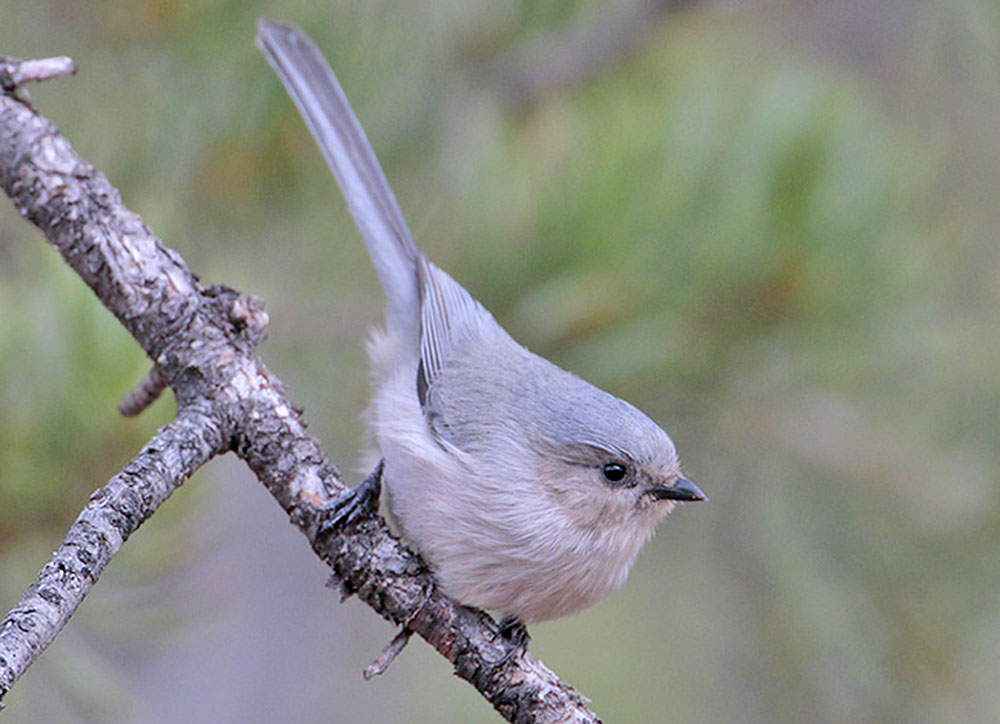
Photograph © Greg Lavaty.
- Average size: 4.3 inches (11 cm)
- Average weight: 0.2 ounces (5.6 grams)
Bushtits are one of the smallest birds in North America and they have 10 subspecies. Although there are some significant differences in the subspecies’ plumage, they’re all characterized by a pale gray to pale grayish-brown upperside and a lighter gray underside.
Bushtits are quite common, and you can see them foraging in the foliage, sometimes even hanging upside down. They inhabit open woodlands, parks, and gardens of the western United States and the highland parts of Mexico.
#10 Verdin
Auriparus flaviceps
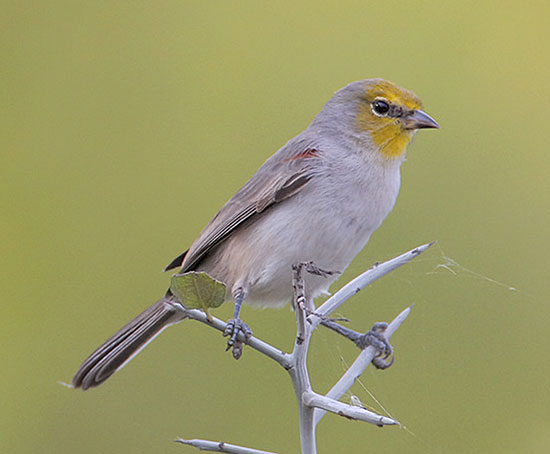
- Average size: 4.5 inches (11.5 cm)
- Average weight: 0.24 ounces (6.8 grams)
Verdins are small but adaptable birds that have light grayish plumage and a yellow head, small reddish patches at the bend of the wings, and a short black bill. They may build several nests in one year and since the nests last for several seasons, there seem to be more nests than birds themselves.
You can meet Verdins in brushy arid regions in Mexico and the desert southwest of the United States, flitting about alone or in pairs and exchanging sharp call notes.
Although their population is still big, they’ve experienced a sharp decline in numbers due to the loss of habitat and it is expected to continue.
#11 Blue-gray gnatcatcher
Polioptila caerulea
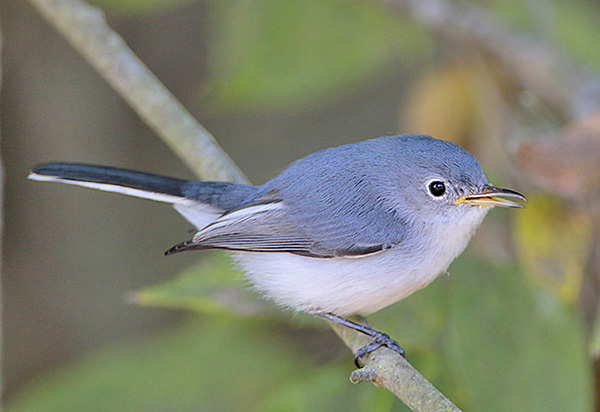
Photograph © Greg Lavaty.
- Average size: 4.5 inches (11.5 cm)
- Average weight: 0.22 ounces (6.2 grams)
This very small songbird has a mostly washed-out grayish-blue upperside, a grayish-white underbelly, and a black tail. During summer, males have a black V-shaped stripe on their forehead. Females are a bit more modest and have a grayer upperside. All of them have white eye rings.
This species breeds in open deciduous forests and shrublands in Mexico, the eastern and southwestern United States, and southern Ontario. You can encounter them in a variety of woodland habitats, especially at their edges, but it avoids coniferous forests.
Blue-gray Gnatcatchers have a numerous population that is slightly increasing.
Did we miss something? Let us know in the comments

